In the Ukraine war, even the corpses are booby trapped. Canada is helping Ukrainian soldiers stay alive
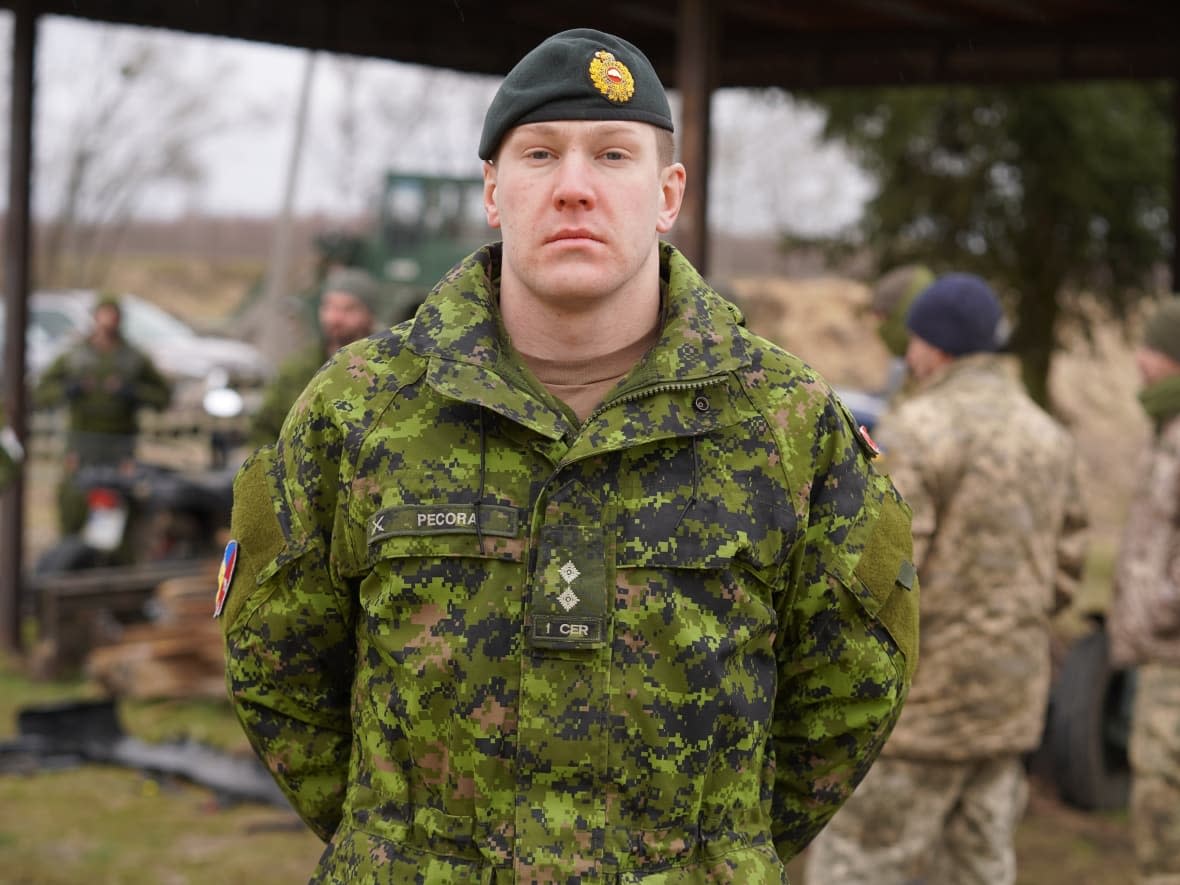
On his knees in a fighting trench, a lone Ukrainian soldier is carefully searching for the nearly invisible tripwire attached to an explosive device — without triggering it.
No easy task, made all the more challenging in the mucky slit filled with spent ammunition, food containers and garbage.
He's being watched too.
But he's not in any danger.
This is a training exercise, pulling soldiers from Ukraine's front lines to the comparative safety of Poland, where Canadian combat engineers act as instructors, teaching how to detect and defuse land mines, booby traps and other improvised explosive devices (IEDs).
"Ukraine asked us to teach their soldiers how to clear things like this," explained Lt. Jacques Pecora of the Canadian Armed Forces. "They were taking casualties as they were retaking land. When the Russian soldiers would withdraw, they would often booby trap trenches."

The training happens fast. It has to. Ukraine needs its soldiers back in the fight with the new skills they're getting here.
They are "critical for battlefield survival," according to Canada's Chief of Defence Staff.
Gen. Wayne Eyre won't talk about the exact tactics being transferred, to ensure Russia doesn't know either, but says "Canadians can be extremely proud of what we've given Ukrainians in terms of skills and knowledge."
Anything could be a trap
While Ukraine does not release casualty figures, it's clear soldiers have been killed by IEDs placed in laptops, phones, ammunition boxes — even the corpses of Russian soldiers when they've abandoned positions and the Ukrainians move in.
The Ukrainians are being shown how to use ropes to open doors, move bodies, shift anything where an IED could be hidden. If detonating a device is going to happen, the aim is for all soldiers to be at a safe distance when it does.
Beyond this, 30 per cent of Ukraine's territory is now contaminated with land mines, seeded by forces from both sides.
That has been extremely destructive to military vehicles, often killing those inside, but also leaves a long-term legacy.
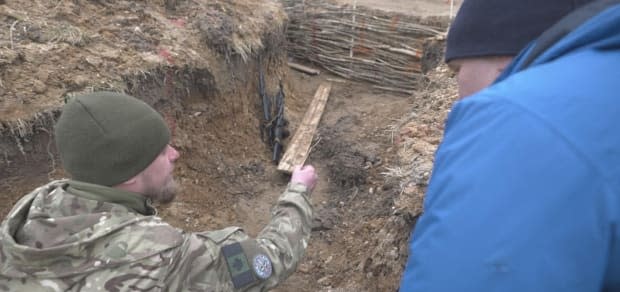
"We will have to do lots of demining, it will be hard, some estimates are that it could take five years, just so people can use their homes," said Ukrainian soldier Pte. Sologub. Military authorities would not reveal his full name for safety reasons.
But all the Ukrainian soldiers on this course are battle-tested, their minds attuned to the dangers at the front.
"A lot of people when they first arrived here took cover when airliners flew overhead. Because in Ukraine, there are only military planes, and if you see them, they may be coming to attack you."
Four days after the interview, he was back on the front lines, putting the new skills taught by Canadians in Poland to the test.
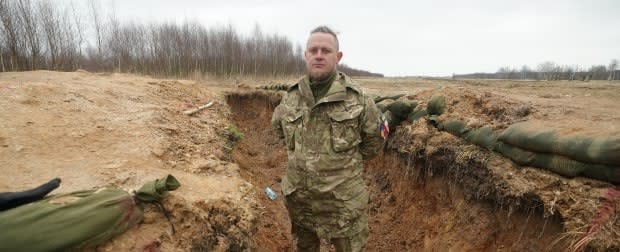
Demining could take a generation
Even if the war in Ukraine were to end immediately, the scourge of land mines would remain.
There is no single map of where they've been buried alongside roads, in fields and forests.
"The contamination in Ukraine is massive," said Canadian Jasmine Dann of the mine removal charity Halo Trust once championed by Princess Diana. "The difference [compared to other mined nations] though is the complexity."
Traditional land mines are activated when pressure from a foot or vehicle compresses two metal plates together, completing an electrical circuit and prompting a detonation.
While those pressure plate mines are widespread in Ukraine, so too are seismic devices which explode based on any movement around them. That makes mine clearance especially challenging.
There are also magnetic devices, triggered by metallic objects passing nearby, whether a tank or the metal detector used by a mine clearance specialist.
Until they're cleared, life can not return to normal.
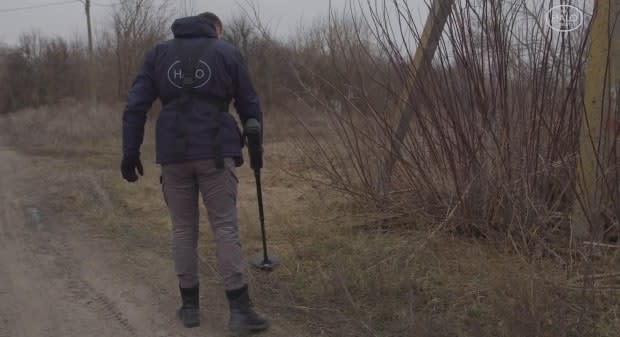
"Ukraine was one of the world's biggest producers of agricultural products," said Dann. "I've seen first-hand farmers who haven't been able to access their land, haven't been able to get back to their livelihoods, and now can't make a living for their families."
The former government bureaucrat is now the Operations Officer for Halo Trust's entire operation in Ukraine. The efforts are supported, in part, by the Canadian government. At the start of the war in February 2022, the Trust had 200 mine clearance personnel in the country. By the end of the year, it estimates it will have to have 1,200.
Even then, finding and removing all the mines will take a generation at least, and quite possibly decades.
The cost of finding where the mines are will be measured in lost limbs and lives, as has been the case in Cambodia, Vietnam and Afghanistan which each struggle with mines more than 50 years after they were laid — the long tail of any war.
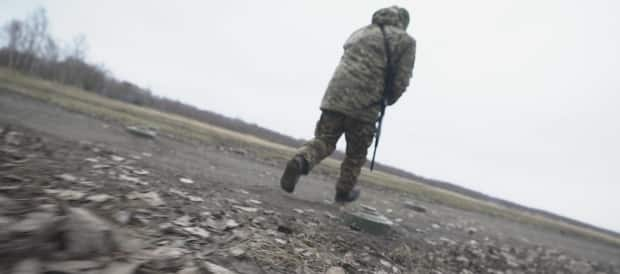
Canadian training mission to continue
While the soldiers of NATO nations are not directly fighting in Ukraine, the alliance is certainly involved in the war effort.
A new deployment of Canadian soldiers — combat engineers and medical trainers — are beginning their multi-month assignment to various facilities in Poland, training successive rotations of Ukrainians on the skills they need now.
And there is immediate feedback from former students, letting the Canadians know new Russian tactics and seeking solutions on how to defeat them.
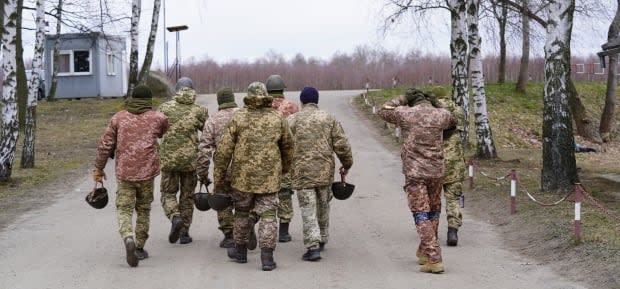
Watch full episodes of The National on CBC Gem, the CBC's streaming service.


